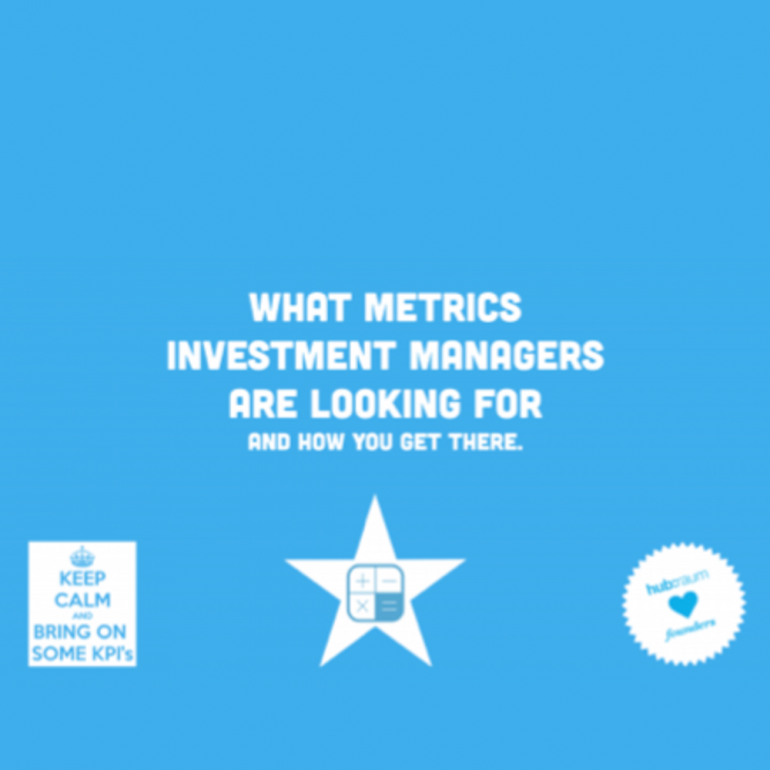KPIs, long-term strategies, scalability: Many metrics are key when investors consider adding a startup to their portfolio. We tell you what counts.
Many of you might have never wondered, why we request KPI’s, market data and many more metrics in your pitches. It’s just clear that they need to be in there – investors want to see them! But do you really know why and which in particular we want to read in your pitches? No? Then let’s get to the bottom of it. Right now.
First things first – in every round of investing we are looking for different kinds of KPI’s. In this article, let’s only look at what’s important in the pre-seed phase. However there is one thing that fits into all phases. The KPI’s you are delivering in your pitch and business case are assumptions you need to validate further until the next financing milestone. We know that most of you are in stages where you don’t have any customers yet, maybe a prototype on hand but not necessarily any validation of the assumptions you’ve collected. For us the assumptions need to be well researched, clear and backed properly.
So what is it that needs to be validated? One thing up front…it’s not ROI, IRR, CAGR and the like.
Markets can be looked at from different perspectives
This is really a macro perspective on the market. We call this a top-down approach. You look at the total size of the market you are in and look at specific KPI’s that describe this particular market. You determine the Total Addressable Market by looking at the worldwide market you are able to reach with your product. But this is only one view on the market: a very static one. What we need is also the dynamic perspective. That means, how the market is developing. Is it growing, is it shrinking or is it saturated and therefore leveling?! This is really something you need to state, because it gives you the security, that you are operating in the right market and gives us the chance to evaluate how much you can get out of your idea eventually.
f we go deeper into your business case there are a couple of metrics that will give you a far deeper understanding of your business, your customers and how realistic your determined top-down market size is. The metrics involved here will contribute to your bottom-up market approach.
Cost of Acquisition (CoA)
This metric describes the cost associated with any new customer to your business. That includes marketing, discounts, referrals or any other payments that are necessary to get a new customer to buy your product.
It is simply calculated by accumulating the costs and dividing them by the number of new customers over a set period of time.
Of course you might have no practical experience of which costs are associated with you acquiring new customers, but that’s why we count on you to deliver reasonable assumptions.
Customer Lifetime Value (CLV)
This is literally one of the most important metrics to figure out before you start. Why? Because it gives you an idea of how much each customer you acquire will be worth during his whole customer journey with your product. And because it is a great way of validating whether you can actually earn money with your customers!
The calculation of the CLV is actually dependent on the margins you earn per unit of your product, the retention rate (how much percent of your customers make a another purchase) and a set discount rate, you define in order to discount your future margins. So what you really calculate is the net present value of one customer.
Here’s the formula:
Customer lifetime value ($) = Margin ($) * (Retention Rate (%) ÷ [1 + Discount Rate (%) – Retention Rate (%)]
CoA vs. CLV
The most important part now is to compare these two KPI’s. Why? Pretty simple, if the CLV is bigger than the CoA you will make profits with this customer eventually, if not you are losing money with each customer.
In order to refine this calculation it makes a lot of sense to include already the following metrics into your consideration:
Conversion Rate
How many of the overall available customers can you actually approach to potentially become YOUR customer? This is a matter of clear segmentation and target groups.
Customer Conversion Rate
How many percent of the acquired customers actually become paying customers? This is highly dependent on your business model – are you using a freemium model, pay per use, a monthly subscription or is your service completely free?
Churn Rate / Attrition Rate
This ratio describes how many of your customers are not returning to make a second purchase. Basically the Retention Rate is calculated by subtracting the Churn Rate from 1)
As you are most likely to be in a very early stage and therefore can’t say what exactly your Conversion and Churn Rates will be, try to at first compare different peers in your market and if you can’t find any of their numbers make educated and reasonable assumptions.
Based on these KPI’s you can now determine your potential target market from the bottom-up (Total market size * conversion rate). Plus you are able to figure out, how much you can get out of each € invested into acquiring new customers [CLV – (CoA/ Retention Rate)]. This is even more important as you can now estimate how much funding you will need in order to gain significant traction.
Metrics might not be everything. But a lot.
As you can see there are measures that mean more to us in your slides than revenues or profit figures. Not because we don’t like revenues or profits – not at all. But in particular because they are the underlying foundation for these figures. Moreover you will be able to prove your assumptions right and get a clearer view on your business eventually.
So now make your minds about these figures and then hack your your Spreadsheets really hard.


